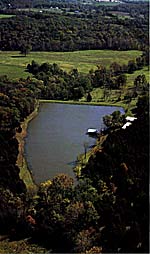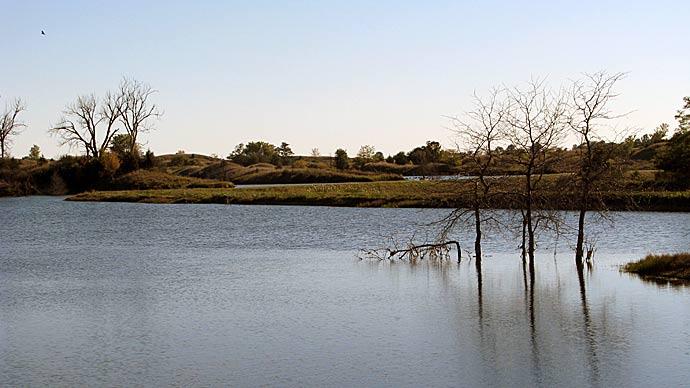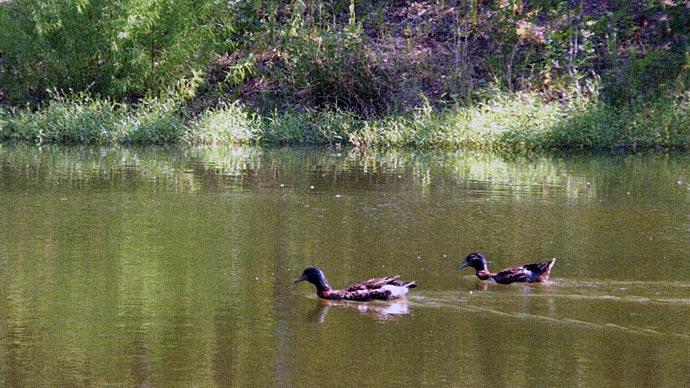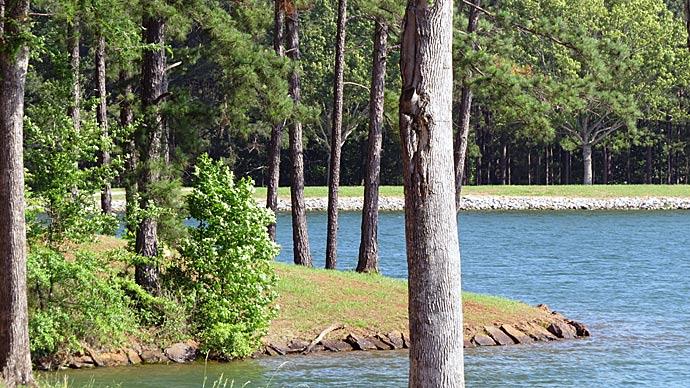
Pond Boss readership continues to grow. Avid pondmeisters are thirsty for functional information. One of the biggest mistakes we see in the field are landowners who don't know what steps to take when planning for a new pond.
Fewer than 10% of private ponds or lakes are built for recreational fish production. Even fewer are properly designed, and as a result, have ongoing management issues. Before moving a spade of dirt, make plans.
Job one? Set goals. Know your target. Want a catfish pond? Building a trophy bass lake? Or, a simple, well balanced pond to mesh esthetics of a weekend place?
With goals firmly in hand, learn your potential pond site. Start with topographical maps and aerial photos. Maps can be obtained from local NRCS offices, or via the web. Reading topo maps gives first clue to suitability of a site. Learn area of watershed which feeds your pond site. Remember this...one acre, one inch deep is 27,000 gallons. Using average annual rainfall, with advice of local soil scientists, calculate how much water your pond site receives. That tells the tale how big a pond should be built.
Next, learn soil types. Here's a valuable tip. All soils leak. Clay soils leak less. Read soil maps, and then dig test holes to look for clay soils. To build a dam, you need compactable soils, at least 30% clay.
Depending the size pond or lake you intend to build, there is some level of engineering required. Smaller ponds, you can engineer. But, if more than 200 acre feet of water will be impounded, seek help from professional engineers. Get the best idea how many cubic yards of dirt must be moved to build a dam. Ask about core trench or "keyway." A dam must be built on top of a solid foundation. Your site may need more dirt moved below ground than on top. It's good to know about core trench needs before you start. Figure it into the budget. A dam is a water management structure.
By design, dams are built to impound and release excess water in an orderly fashion. Take care to design an appropriate primary spillway, often a pipe. Pipe diameter is dictated by volumes of water to be released during a "normal" rainfall event. Also design an emergency spillway, to handle flood events. Most primary spillways sit in dam's center, releasing water into the lowest point, usually a creek or stream. Primary spillways are designed differently, usually at dam's end. Discuss with your engineer or contractor, before construction. For lakes managed for fishing, a bottom water release pipe is the best primary spillway. There are several designs. Simply wishing to release excess water? Simpler designs exist. Learn, then decide.
As plans comes together, constantly keep goals in mind. Very important.
A dam is a water management structure, but the rest of the pond or lake is habitat.
Design lake bottoms properly. Learn about fish you wish to stock. Know how they spawn, how they eat, how they hide. Then, provide spawning beds along with permanent structure or cover for each type of fish you plan to stock. Here's a rule of thumb. No more than 15% of a pond or lake should have fish structure. More is too much, less isn't enough. Diversify cover. Small fish need dense cover, largemouth bass want "fluffy" cover. Don't put cover in deepest waters. Fish won't use it. Place your cover peripherally, especially off points in shallow water with quick access to deep. Design cover for fish, but consider fishermen's likes, too. Fish want safe places to hide, and highways to move along.
Here's a few more tidbits for creating and building a pond or lake; make sure your water reaches three feet deep as soon as possible, or prepare to deal with runaway aquatic plants; create structure with rock piles, trees, tree trunks or sharp dozer blade cuts..make humps, bumps and underwater channels; structure should be placed in water 4-8 feet deep; eliminate shallow water with spits, peninsulas or islands. Shop contractors..find one with experience building ponds similar to what you want. Try to pin them down on costs, but be prepared to go over budget. Things happen underground which can't be planned. Guide your contractor on site to be sure you get what you want. Too many well planned projects end up less than satisfactory because a landowner didn't step in to guide the contractor. Cut standing timber..no one has ever seen a fish in a tree top five feet above water. When cutting standing timber, saw at least 4 feet below water line. Underwater stumps are mean to boats.
Take time to plan. 30 days of homework pays off at the bottom line. Planning helps ensure project success. And when the pond is full of water and ready to enjoy, you will have pleasure knowing the efforts of planning truly paid off.
Resources:
Natural Resources Conservation Service-local offices in most county seats. Providing technical assistance to landowners.
Ponds: Planning, Design, Construction. 1982. Natural Resources Conservation Service. Agricultural Handbook No. 590. 51pp.
Pond Boss magazine and website. www.pondboss.com or (800)687-6075.
Whitis, G.N. 2002. Watershed Fish Production Ponds: Guide to Site Selection and Construction. Texas Cooperative Extension. Southern Regional Aquaculture Publication SRAC 102. 6 pp.
Reprinted with permission from Pond Boss Magazine



